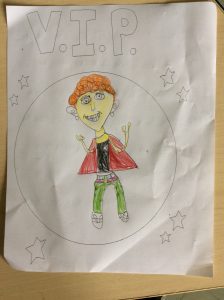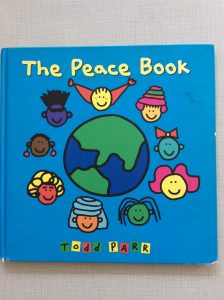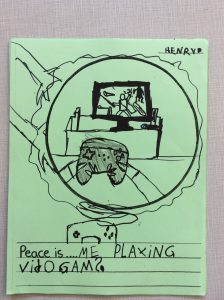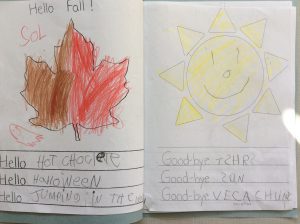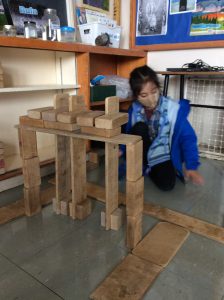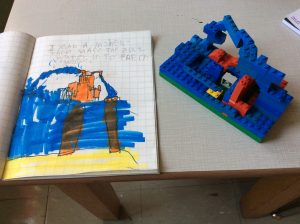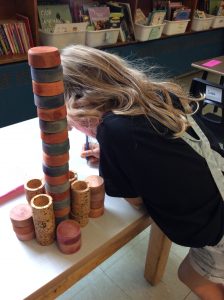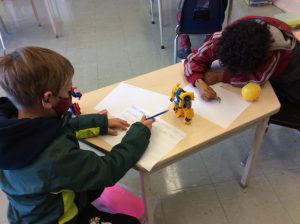I love to write, and I hope that my enthusiasm for the writing process inspires and encourages my Grade 2 students to write on!
VIP:
At the beginning of the year, we are working together to create a brave and inclusive community where everyone is recognized as a “very important person”. The VIP program celebrates one student each day. Everybody has a story, and we learn about the VIP by listening and asking questions. Together, we talk about what good writers do as we write several sentences about the VIP. We notice the letters in their name and practice printing them correctly. Then, everyone draws a picture and writes about the VIP. These pages are collected and sent home as a book for the VIP to share with their family.
On the first day of school, I was the VIP to model the process. Yes, I was wearing a cape at the time, to demonstrate our superhero arms-distance protocol, and to reinforce that we all have superpowers.
The Peace Book:
Every year on September 21, we recognize the International Day of Peace as part of Peace Week. Peace Week is an excellent opportunity to introduce and/or review the Zones of Regulation and practice mindfulness strategies. We share ideas about when we feel peaceful, and brainstorm agreements for how we might resolve conflicts and solve problems in our community. We sing songs and read stories about peace and justice. After reading “The Peace Book,” by Todd Parr, we created our own classroom book inspired by his book.
Poetry:
In the early primary years, students are growing as readers and writers. We all require support to become more independent and confident in our new learning. Writing prompts and predictable structures can help emergent writers to get started and complete their work.
On the first day of fall, we wrote short poems called “Good-Bye Summer! Hello Fall!” We generated ideas for our writing by sharing what we love about summer and fall in a Knowledge Building Circle. We also used Drama to play out our favourite activities and connect our bodies to our learning. We sang songs about the signs of fall, drew pictures, and wrote about what we noticed in our Nature Journals.
MSI:
In my first year of teaching, I started as a Long-Term Occasional from October-June. The teacher who left was exemplary, and she had established a program called MSI: Math-Science Investigation, which I continue to this day. Before STEAM, there was MSI. It involves solving problems through building.
During MSI, I invite students to build a structure connected to our current inquiry (e.g., build a structure that includes a repeating pattern, build a habitat for an animal, etc.) After building with different materials (e.g., pattern blocks, straws and connectors, corks, Lego, etc.) students will write and draw about their structures in their Math Journals.
When I asked students to build a structure connected to water, they made: a hydroelectric dam, salmon, a lake, pipes, a boat, and a machine that turns saltwater into freshwater.
Toy Day:
Every 6-8 weeks, I organize a Toy Day in our classroom. On this day, everyone is invited to bring a toy to share. We use these toys as provocations for many learning activities in the classroom, including Drama, Math, Writing, Media Literacy, Art, etc.
At the beginning of Grade 2, I am collecting diagnostic assessment data about my students, and I always use the Grade 1 Ministry of Education writing exemplar, which is descriptive writing about My Toy. After sharing and playing with our toys, students are motivated to write and draw about their toy.
Goal-Setting:
COVID-19 has impacted student learning in different ways. There might be gaps in achievement, which need to be identified before we can build new skills. I will use the assessment data to develop individual short-term writing goals with each student, and support everyone to work towards meeting their goals. When students work towards individual goals that are “just right” for them, they can always feel successful. These writing goals will also be shared with families, to strengthen the home-school connection and encourage a relationship of collaborative assessment.

